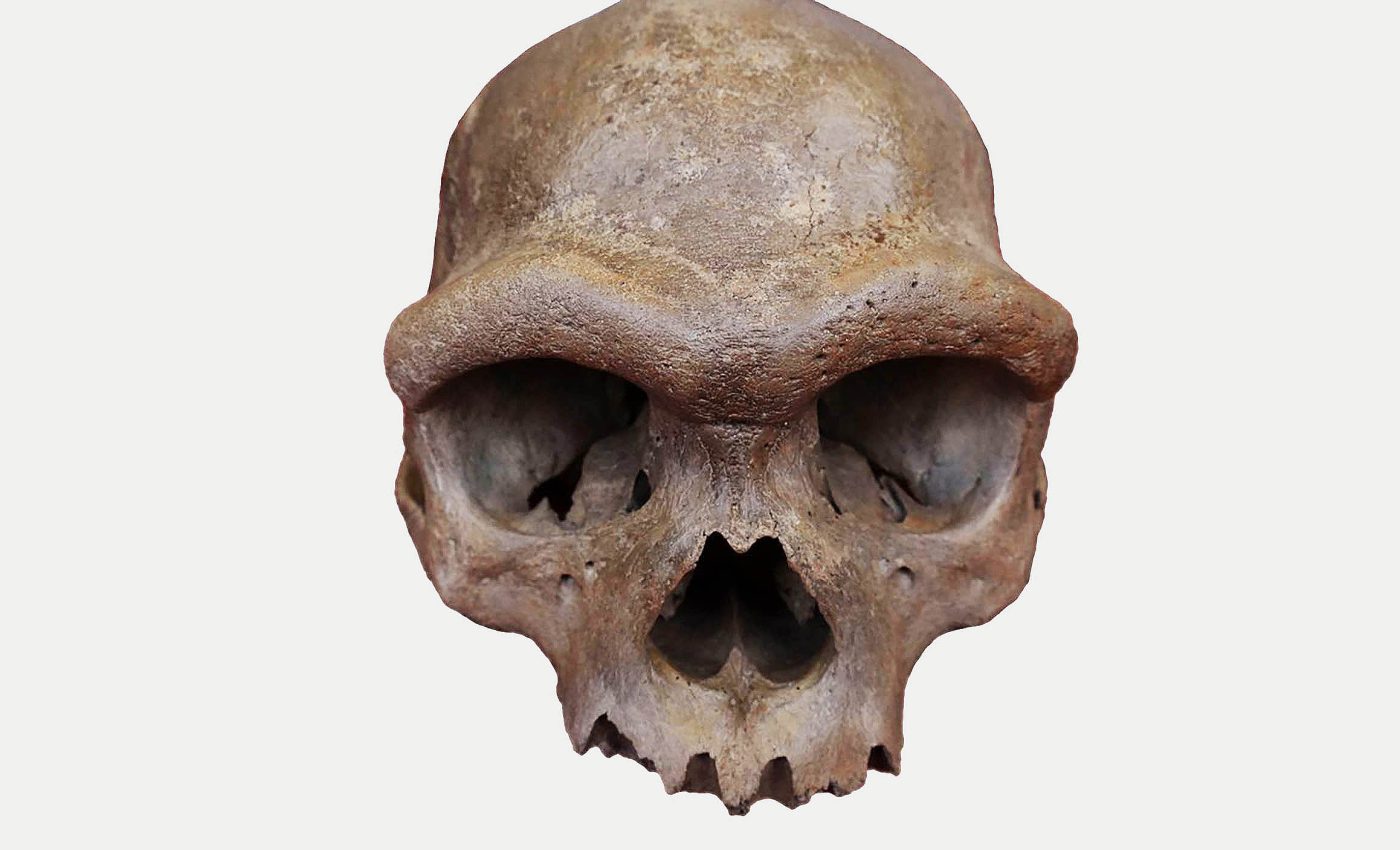
DNA analysis of the "Dragon Man" fossil skull gives an identity to this early human species
For years the Denisovans lived only in gene sequencers and imagination. Now, a massive skull nicknamed Dragon Man has handed them a recognizable profile.
Molecular sleuthing has tied the more‑than‑146,000‑year‑old Harbin cranium to this hidden branch of humanity, linking ancient genes to real bone and allowing scientists to ask new questions about their lives.
How Dragon Man was linked to Denisovans
Evolutionary geneticist Qiaomei Fu of the Institute of Vertebrate Paleontology and Paleoanthropology (IVPP) in Beijing led the team that brought Dragon Man into the Denisovan family.
Researchers first spotted Denisovan DNA in 2010 while sifting through a finger bone from Siberia’s Denisova cave, but no one knew what the owner looked like.
The Harbin skull fills that void, displaying thick brow ridges, a roomy braincase, and cheeks that fall between Neanderthal ruggedness and modern delicacy.
Fu’s crew scraped its tooth tartar, recovered mitochondrial DNA, and confirmed the specimen as Denisovan.
The same calculus yielded 95 ancient proteins, three of which match Denisovan‑specific variants, an independent molecular fingerprint. Together the molecules silence earlier claims that the skull represented a separate species called Homo longi.
From finger bone to Dragon Man
Denisovan fossils remain vanishingly rare: a handful of molars, a jaw from the Tibetan plateau, and microscopic bone shards. Until now each piece was too small to offer a clear sense of body shape.
“This is the first time we have connected a cranium to Denisovans,” says Fu. Dragon Man changes that scale because the cranium measures almost a foot long and holds a brain as large as our own.
The discovery also settles a debate sparked in 2021 when the same skull was proposed as a new species. Molecular data now show the specimen sits comfortably within Denisovan diversity, trimming the family tree rather than adding another branch.
DNA timelines place the Harbin individual in an early Denisovan wave that occupied northeastern Asia between 217,000 and 106,000 years ago, overlapping with Neanderthals to the west and early Homo sapiens to the south.
Tooth tartar gave crucial DNA
Ancient DNA usually hides inside dense ear bones, but Chinese collectors removed those sections decades ago. Fu gambled on dental calculus, the rock‑hard film that entombs oral microbes, and won big.
Its crystalline structure protected hominin cells well enough that even a few dozen authentic reads could be stitched into a complete mitochondrial genome.
The success hints that thousands of museum teeth could preserve similar “genetic time capsules,” waiting for modern clean‑room techniques to unlock them.
Denisovans were large and strong
Denisovan teeth are famously big, and Dragon Man fits the trend. Paleoanthropologist Bence Viola, who was not involved, estimates a lean body mass near 220 pounds and calls these hominins “enormous individuals.”
This huge body size may have shaped their behavior. A high caloric demand would force groups to patrol large territories, which might explain why Denisovan DNA is sprinkled across Asia yet their fossils remain scarce.
Recent isotopic work on the Xiahe jaw hints at a meat‑heavy diet, supporting the idea of large, cold‑adapted hunters roaming upland steppes.
If those inferences hold, the Harbin hunter probably needed more than 4,000 calories a day, a demand that would have shaped group mobility.
Large bodies paired with cold winters could push clans toward seasonal migrations following herds of deer and horse.
Denisovan DNA in modern humans
Modern people still carry pieces of Denisovan code: Papuan and other Melanesian genomes hold roughly four to six percent of it. In Tibetan highlanders a Denisovan version of EPAS1 fine‑tunes oxygen use at 13,000 feet.
Scientists have traced at least two separate Denisovan introgression events, showing that our ancestors met different Denisovan groups on separate journeys through Asia. Each encounter left unique genetic signatures still detectable today.
These genes influence immunity, fat metabolism, and even responses to viral infection, proving that introgression was not a biological dead end but a source of useful variation.
Dragon Man shifts the human story
The new data place Denisovans across a vast swath of Asia during the Middle Pleistocene, from chilly Siberia to low‑latitude islands.
Each region likely held groups that drifted apart for tens of thousands of years, explaining the diverse DNA signatures seen in present‑day genomes.
Harbin also forces a second look at Chinese fossils such as Dali, Jinniushan, and Hualongdong. Their shared mix of archaic and modern traits could now be read as regional Denisovan features rather than evidence for separate species.
Researchers are building three‑dimensional digital models that blend Dragon Man measurements with genetic findings, offering fresh hypotheses about locomotion, speech capacity, and social display.
Scientists continue the Denisovan hunt
Fu’s group is already probing Dragon Man’s inner ear bone for nuclear DNA, the larger genetic archive that could reveal eye color, disease risks, and kinship to Neanderthals.
Proteomics labs are scanning museum drawers for overlooked Denisovan teeth, while field crews are widening the search to caves in Laos and the Philippines.
Each success will feed improved phylogenetic models that trace how ancient populations split, traveled, and reconnected.
The result will be a messier but richer human story, one where several kinds of people shared ideas, pathogens, and offspring across Asia.
The lessons extend beyond academia. Understanding how past gene flow boosted altitude tolerance or immune function could guide modern medicine in a warming, relocating world.
Dragon Man reminds us that humanity is bigger than any single lineage and that even hardened tooth tartar can rewrite textbooks.
The study is published in Cell.
—–
Like what you read? Subscribe to our newsletter for engaging articles, exclusive content, and the latest updates.
Check us out on EarthSnap, a free app brought to you by Eric Ralls and Earth.com.
—–













